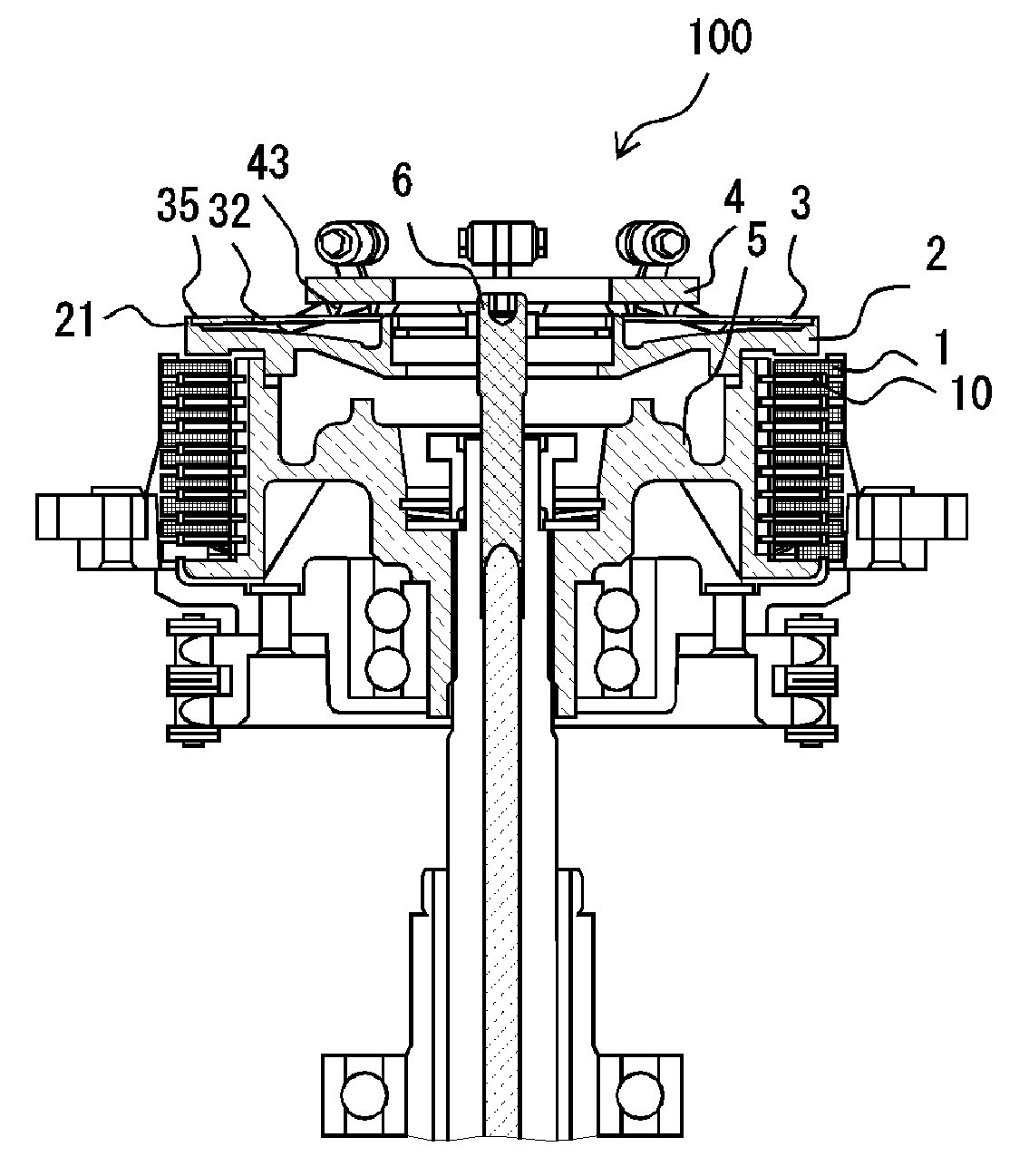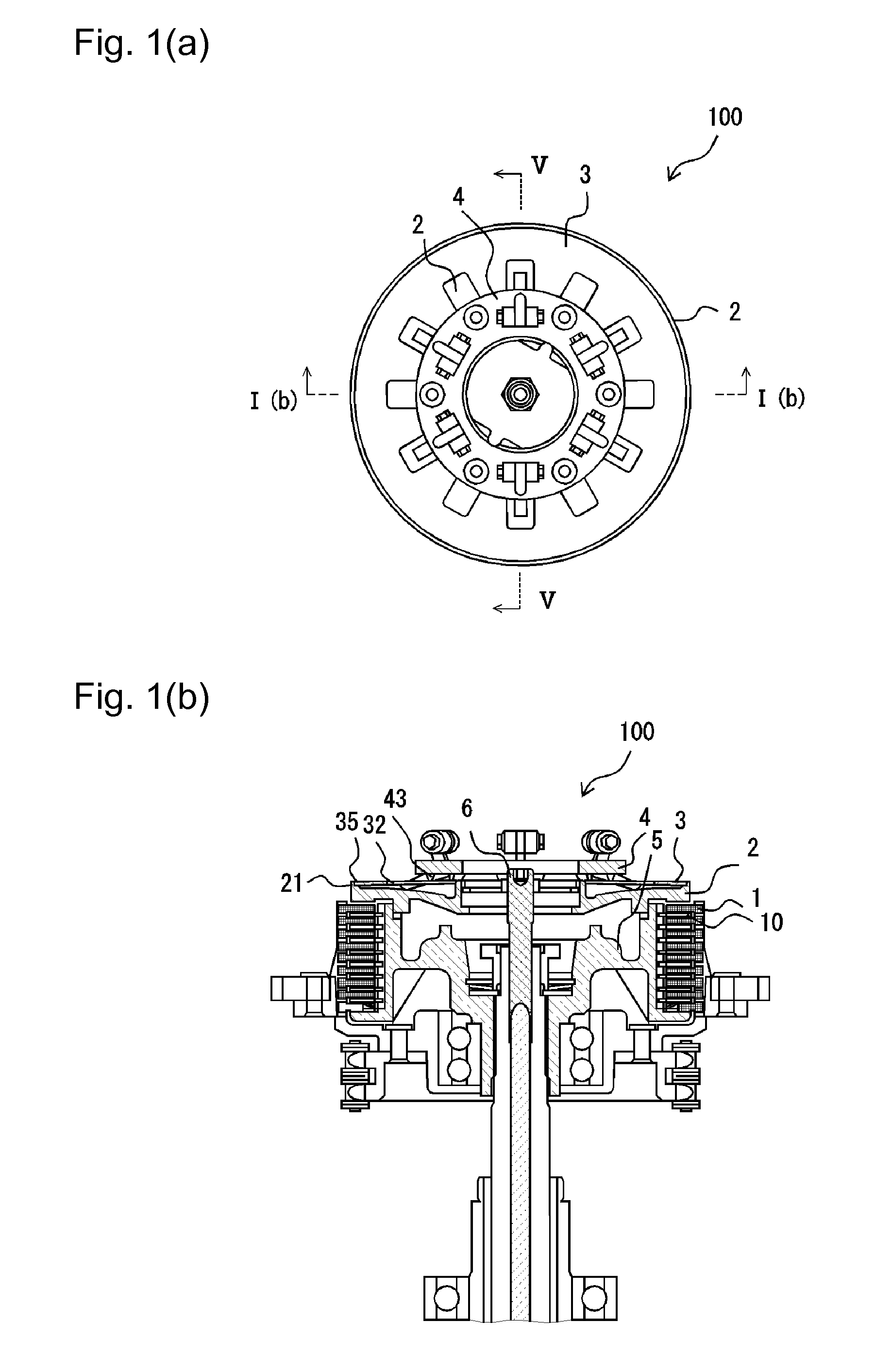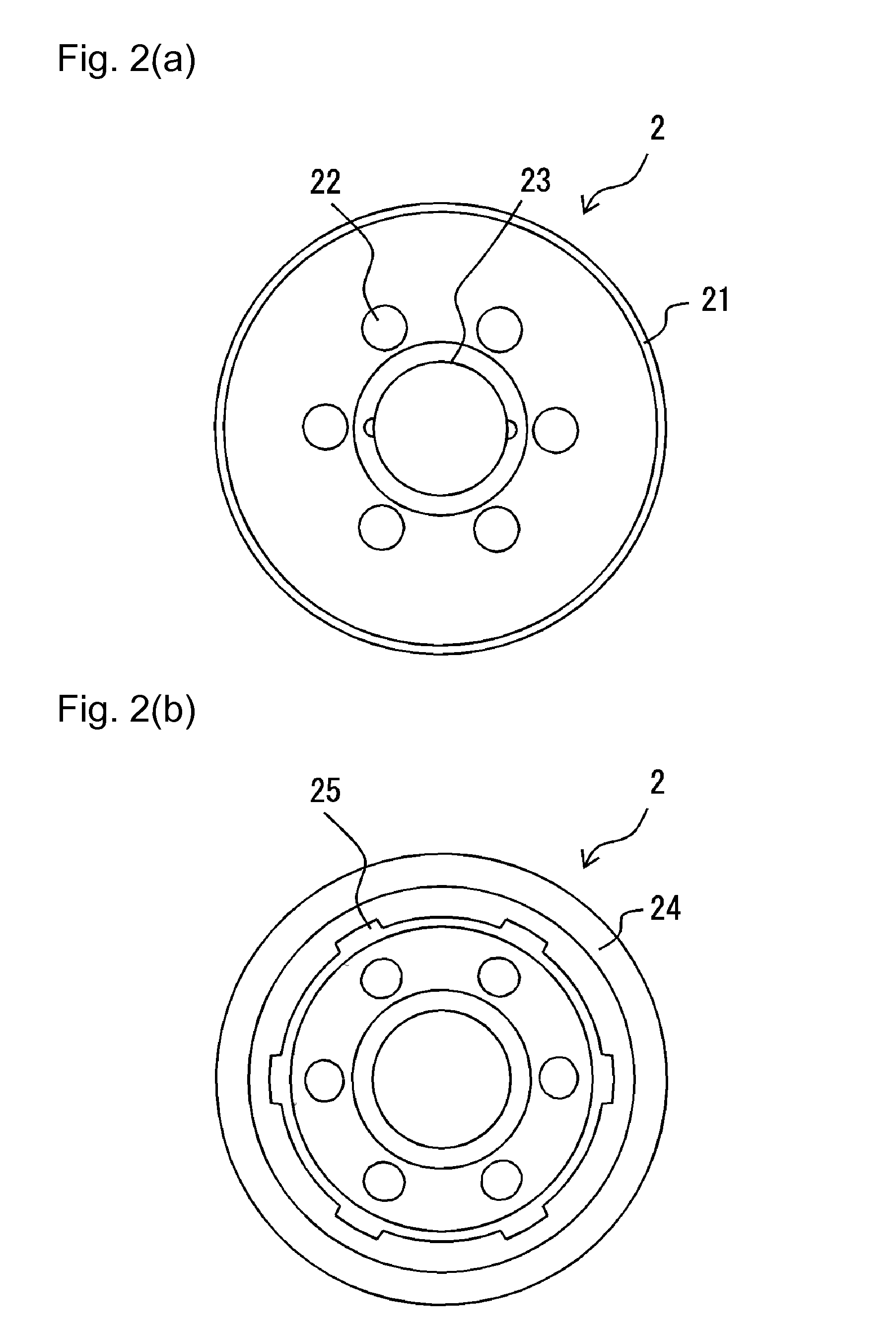Clutch mechanism
a technology of clutches and ring rings, which is applied in the direction of friction clutches, clutches, interlocking clutches, etc., can solve the problems of reducing the grasping power of the driver, putting a heavy burden on the driver, and inevitably large spring load, so as to reduce the diameter of the clutch ring, reduce the generation of load, and simple structure
- Summary
- Abstract
- Description
- Claims
- Application Information
AI Technical Summary
Benefits of technology
Problems solved by technology
Method used
Image
Examples
embodiment 1
[0051]FIG. 1(a) is a plan view of a clutch mechanism 100 as an embodiment 1 of the present invention, and FIG. 1(b) is a sectional view taken along line I(b)-I(b) in FIG. 1(a).
[0052]The clutch mechanism 100 plays roles to transfer rotational driving force which is inputted via an input system (not shown) to an output system (not shown) and to discontinue the transfer. In this connection, the input system comprises an engine and a series of well-known mechanism parts which are operatively connected to the engine to transfer rotational driving force of the engine to the clutch mechanism 100. The output system comprises a series of well-known mechanism parts which receive the driving force of the engine via the clutch mechanism 100 and output the driving force to power a driving wheel or driving wheels.
[0053]The clutch mechanism 100 has a plurality of friction plates 1 as rotational driving force outputting members connected to the input system, a plurality of clutch plates 10 as rotat...
embodiment 2
[0110]FIG. 6(a) is a sectional view of a clutch mechanism 200 as an embodiment 2 of the present invention, and FIG. 6(b) is a plan view of a base plate 7.
[0111]The embodiment 1 has such a structure that the operative portions 45 of the L-shaped arms 44 of the retainer 4 are brought into direct contact with the pressure plate 2 to apply a load to the pressure plate. On the other hand, the clutch mechanism 200 has such a structure that the base plate 7 as a centrifugal load transfer means as shown in FIG. 6(b) is placed between the operative portions 45 of the L-shaped arms 44 and the pressure plate 2, as shown in FIG. 6(a). With respect to the other structural features, this embodiment is the same as the embodiment 1.
[0112]The base plate 7 has an annular portion 71 and plate portions 72 extending outward from the circumferential edge of the annular portion 71.
[0113]The plate portions 72 are located corresponding to, of the slits 34 of the diaphragm spring 3, those 34 which correspond...
embodiment 3
[0116]FIG. 7 is a sectional view of a clutch disc(s) pressing assembly 300 as an embodiment 3 of the present invention.
[0117]As described in the above, each of the clutch mechanism 100 in the embodiment 1 and the clutch mechanism 200 in the embodiment 2 has such a structure that a diaphragm spring is used as an elastic load-applying means. On the other hand, the clutch mechanism 300 in the embodiment 3 uses coil springs 8 as elastic load-applying means. With respect to the other structural features, this clutch mechanism is the same as the clutch mechanism 100.
[0118]A retainer 4 is fixed to an inner hub 5 with bolts 81, and the coil springs 8 are so placed as to surround the bolts 81. By the fixing of the retainer 4, the coil springs 8 are subjected to a load by the retainer 4. The coil springs 8 apply pressing forces to a pressure plate 2 via spring cups 82. In other words, the coil springs 8 are so disposed as to be compressed between the retainer 4 and the pressure plate 2.
[0119]...
PUM
 Login to View More
Login to View More Abstract
Description
Claims
Application Information
 Login to View More
Login to View More - R&D
- Intellectual Property
- Life Sciences
- Materials
- Tech Scout
- Unparalleled Data Quality
- Higher Quality Content
- 60% Fewer Hallucinations
Browse by: Latest US Patents, China's latest patents, Technical Efficacy Thesaurus, Application Domain, Technology Topic, Popular Technical Reports.
© 2025 PatSnap. All rights reserved.Legal|Privacy policy|Modern Slavery Act Transparency Statement|Sitemap|About US| Contact US: help@patsnap.com



